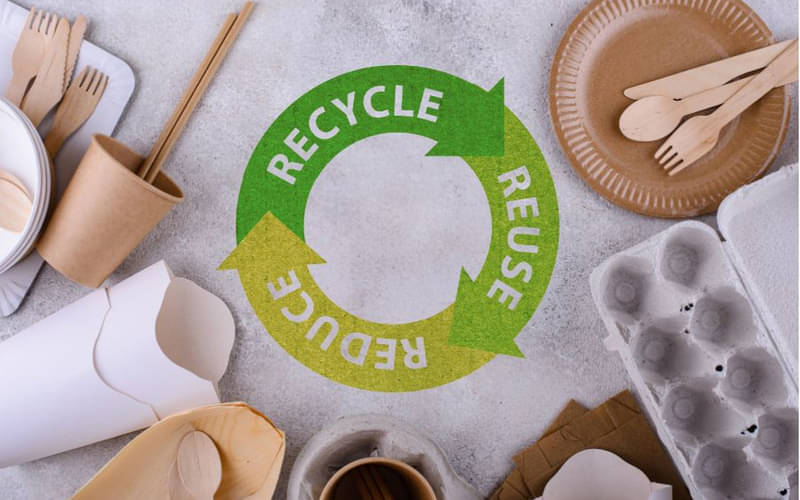Beyond the box: Why FMCG brands must rethink packaging
Sustainability is no longer a slogan—it’s a survival strategy. FMCG players must align packaging innovation with consumer realities or risk losing relevance, say Ipsos India experts
29 Apr 2025 | By WhatPackaging? Team
Sustainability is not a choice; it has become a global corporate mandate. For fast-moving consumer goods (FMCG) brands, embedding sustainability into business philosophy is not only prudent—it is essential. The Indian FMCG sector, projected to reach USD 616 billion by 2027, is witnessing significant evolution. In this dynamic context, packaging emerges not just as a functional necessity but as a critical medium for communicating environmental, social, and governance (ESG) values.
A multi-dimensional responsibility
When developing packaging innovations, brands must carefully consider their multi-dimensional impact to avoid missing opportunities to strengthen their positioning among potential consumers. Indian FMCG companies today face pressure from two key stakeholders: governments enforcing stricter environmental regulations, and increasingly eco-conscious consumers demanding sustainable alternatives.
To address this dual pressure, companies are reshaping their sustainability goals. Alongside energy-efficient manufacturing and greener supply chains, packaging is under the spotlight. It must now meet expectations for responsible sourcing and disposal, transforming packaging into a strategic lever for sustainability.
Working towards a responsible ecosystem
The United Nations defines sustainability as taking full account of the environmental consequences of economic activity and utilising resources such that they are replaced or renewed, not depleted. To translate this ideal into reality, manufacturers and consumers must collaborate to build a functional, environmentally responsible packaging ecosystem.
Manufacturers are now exploring innovative packaging solutions, experimenting with materials and design, and embracing circular economy principles. However, innovation must be synchronised with changing consumer expectations. Brands must account for consumer interactions with packaging across key decision-making moments and adjust accordingly.
Understanding the eco-conscious consumer
In India, the concepts of reuse and recycling are rooted in tradition. Repurposing clothing and reusing containers were once commonplace. However, today’s urban, upwardly-mobile consumers—particularly the younger demographic—are inundated with product choices, making sustainable decisions harder to prioritise.
While many express concern for the environment, a significant "say-do" gap exists: consumers voice support for sustainability but often do not act on it. Cost and convenience frequently take precedence. This behavioural disconnect presents both a challenge and an opportunity for brands.
With a nuanced understanding of consumer psychology, brands can make sustainable choices easier and more accessible. By integrating sustainability seamlessly into product design and packaging, brands can move consumers from intention to action.
Key takeaways for brands
Embrace the dual decree: Integrate sustainability into core business strategy to meet both regulatory and consumer demands.
Lead your consumer: Understand behavioural nuances and design packaging that addresses consumer pain points. Remember, consumers want sustainability, but often cannot act alone.
Leverage packaging as an ESG messenger: Go beyond messaging. Let your material and design choices demonstrate your brand’s sustainability commitment.
Build a responsible ecosystem: Collaborate across the value chain to create a closed-loop packaging system.
Measure your impact: Use expert strategies to capture both environmental and commercial impacts. Consider long-term brand value alongside short-term gains.
Packaging as an ESG messenger
Packaging is more than just a container—it is a channel for corporate accountability. It offers a visible, tactile representation of a brand’s ESG commitments. In India, consumers associate plastic production and waste with climate change. Government interventions, such as bans on single-use plastics, have further underscored the importance of sustainable packaging.
Consumers now view packaging made from recyclable or natural materials as more environmentally responsible. As such, brands have the opportunity to reinforce their values through packaging decisions—building trust and affinity with consumers who care about sustainability.
Measuring the impact
To truly leverage packaging as an ESG communicator, brands must measure its broader impact. This means going beyond lifecycle assessments to understand changes in consumer behaviour, brand perception, and commercial outcomes.
Measurement strategies must address the "say-do" gap by incorporating behavioural data—such as sales figures, engagement in recycling programmes, or ethnographic studies—to understand real-world consumer actions. This evidence-based approach will help brands refine their sustainability strategies and measure return on investment from responsible packaging choices.
BeyondbBoxes
A thoughtfully designed pack can achieve far more than just carrying a product. It can carry a message. It can carry the consumer with the brand on a shared sustainability journey. When approached holistically, packaging becomes a long-term asset, deepening brand loyalty and enhancing relevance in a shifting market.
Therefore, when developing packaging innovations, brands must carefully assess their multi-layered impact. By doing so, they can strengthen their market position, meet evolving expectations, and lead the way in building a sustainable future. In today’s landscape, packaging is not just a vessel—it is a vital tool in driving corporate responsibility.
By L Preetie Kotur, consultant – Health, Ipsos India; R Shruti Patodia, research director – Shopper Insights, Ipsos India.(Source: Campaign India)


